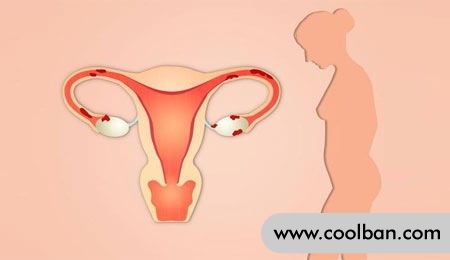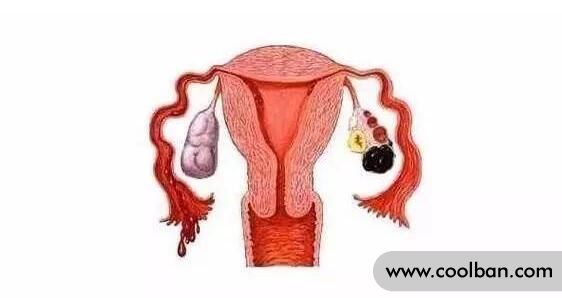What is a chocolate cyst?
Chocolate cysts can cause great harm to women's bodies. Therefore, early detection and early treatment should be paid attention to in daily life. Of course, the usual preventive work is also very important.
What is a chocolate cyst?
The scientific name "ovarian endometriosis cyst" is a common type of female endometriosis. The ectopic endometrium that runs out of the uterine cavity grows in the ovary to form a cyst.
The "runaway" endometrium is affected by the fluctuations of estrogen and progesterone in the menstrual cycle, and a menstrual period is a little longer. Then the sloughed endometrium cannot be discharged like menstruation, and can only stay in the cyst, accumulating more and more. The stale blood thickens and slowly forms nodular lesions, cysts on the ovaries that look like chocolate fluids.

Harm of chocolate cyst
Harm 1. Dysmenorrhea
Dysmenorrhea in female patients will increase year by year, or from scratch, and the pain is usually in the lower abdomen. This kind of dysmenorrhea will start before menstruation, and some may even occur after it ends, seriously endangering women's normal life.
Harm 2. Pain in sexual life
Endometriosis in the uterine rectal fossa, the posterior vaginal fornix, and the uterosacral ligament can cause pain during sex, and it is often more obvious before menstruation.
Hazard 3, infertility
Nearly half of women with endometriosis are infertile. It may be due to pelvic adhesions caused by endometriosis, and tubal adhesions may affect the patency of the fallopian tubes; cysts can also affect ovarian function and prevent ovulation; it also produces many inflammatory factors that affect normal pregnancy.
Hazard 4. Irregular menstruation
Women suffer from menorrhagia and heavy menstrual blood.
Harm 5, pain
When the cyst grows to a certain extent, it may be found to rupture, and there may be mild or severe pain in the lower abdomen on one side. In severe cases, emergency surgery is required.
Although ovarian chocolate cyst is a benign disease of women, it has malignant behaviors such as hyperplasia, infiltration, metastasis and recurrence, which endanger women's health.
Hazard 6, peritonitis
Ovarian endometrial cyst, the cyst wall is relatively fragile and lack of elasticity, menstrual blood gradually accumulates, the pressure in the cyst increases continuously, the content can rupture from the weak part of the cyst wall, overflow into the abdominal cavity and stimulate the peritoneum, causing peritonitis and acute abdomen.

How to treat chocolate cyst?
The treatment plan is divided into conservative treatment and surgery, which can be specifically formulated according to the condition, age, and fertility requirements of female patients.
Although a chocolate cyst is a benign lesion, it will invade surrounding tissues and organs, easily produce inflammation, and form adhesions. Therefore, chocolate cyst is a disease that is more harmful in women's diseases.
Is chocolate cyst dangerous?
A chocolate cyst is a "lump" but not a "tumor" and is not serious if a woman has no symptoms or effects.
However, if young women suffer from chocolate cysts, they often have symptoms such as dysmenorrhea or progressive dysmenorrhea, abnormal menstruation, and even infertility in severe cases. This situation should be considered serious. Chocolate cysts also have malignant fibers that stick and run around everywhere. Every time a menstrual period occurs, the condition will get worse. After treatment, it is easy to relapse, lingering and difficult to heal, causing a lot of harm to women's physical and mental health.

How to prevent chocolate cysts?
1. Reduce unnecessary gynecological surgery
If women of childbearing age do not have a fertility plan, they should pay attention to contraceptive measures to minimize unintended pregnancies and induced abortions, so as to reduce the occurrence of endometriosis.
2. Pay attention to premenstrual pain
When women experience severe pain in the lower abdomen, especially in the first two days of the menstrual period, the pain should be highly regarded.
3. Pay attention to menstrual hygiene
4. Keep a happy mood
